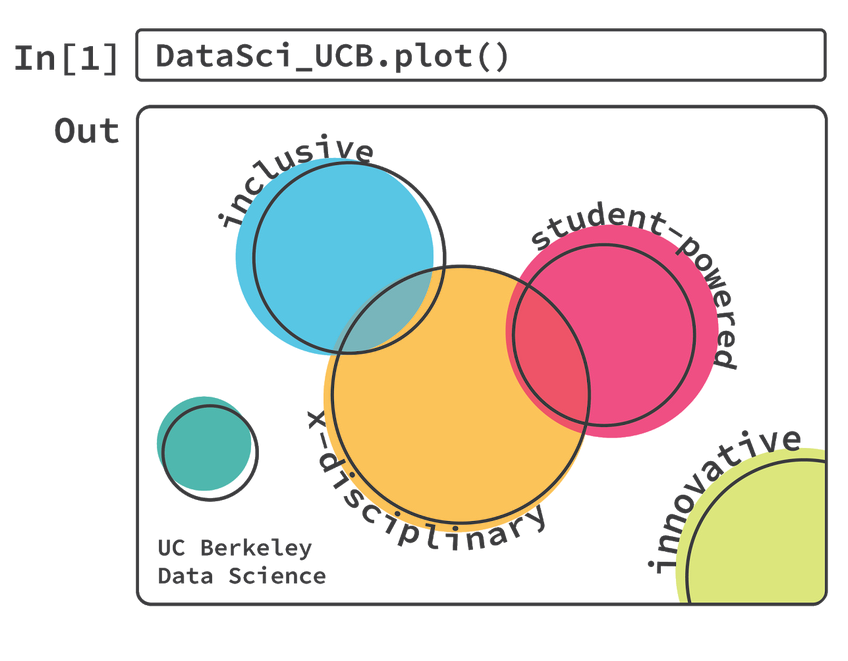Introduction¶
This online resource serves as a guide for professors/instructors that wish to adopt a data science classroom environment. These suggestions are based off of UC Berkeley’s experience teaching introductory data science courses (i.e. Data 8) on campus since 2015. For a guide on the pedagogical and curriculum considerations, there is a separate guide here.
This guide is written with all levels of technical understanding in mind, so even if you are new to creating a computational course, this guide is for everyone!
What is Data 8?¶
Data 8 is a “Foundations in Data Science” course taught for first year students at UC Berkeley. It combines principles/skills in statistics, programming, inference, modeling, hypothesis testing, visualization, and exploration. It provides a foundation in the many fields encompassed by “data science”, and gives students a practical introduction to the field. For a more in-depth description of the topics taught, please reference the separate pedagogy guide.
Creating a data science course from first-principles requires considerable advances in the technology available to instructors. In creating Data 8, the development team has worked closely with members of the open-source community, and has contributed to or adopted many open source projects. The goal driving development of technology for Data 8 is to develop an open platform of which Berkeley happens to be the first user.
As such, most of these components are freely available to the educational community, and we welcome others to adopt these tools for their own uses and become contributors to these projects over time.
Brief Outline¶
The following is an outline of the technical pieces that go into running Data 8. It is broken down by activity/need so that it might be most useful for others hoping to accomplish the same goals.
JupyterHub¶
Quick Link to Jupyterhub Intro
Data 8 started with 60 students in Fall 2015, and now has 1350 students as of Spring 2020. The course operates on a scale and level of complexity that required several technological improvements to our current teaching toolset. The Data 8 team worked closely with various open-source projects in order to contribute to tools that are broadly useful.
Autograding¶
Quick Link to Autograding Intro
Automating the grading of assignments within a Jupyter environment has been made simpler in recent years with the implementation of several open-source software solutions. These strides towards automated solutions save professors and instructors the long hours of grading assignments manually. This chapter serves as a guide towards choosing one that best fits a course’s scale and requirements.
